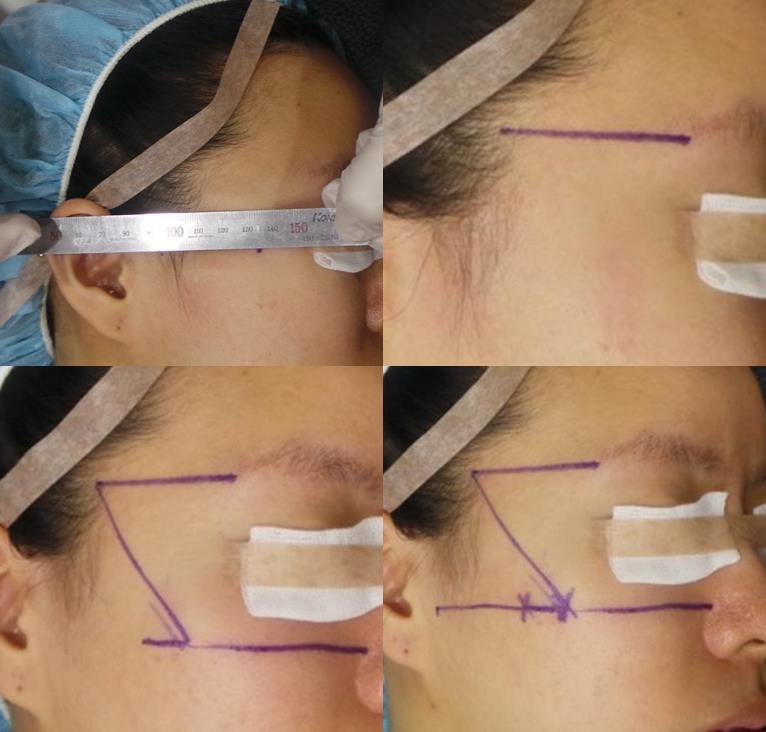
The most important aspect of correction of the temple using dermal filler is that one should consider the aesthetics of the entire face, and not just the temple area. If a patient has an overall thin face with little volume, correcting just the temple will bring little aesthetic improvement. In other words, volume enhancement of the temple will only be satisfactory in a patient with local volume loss. Also, alleviate patient dissatisfaction through clearly communicating the boundary between the temple and forehead and the target area of treatment prior to the procedure. Use the filler to create a smooth and natural connection between the forehead and the temple. The key is to create a smooth outline of the temple area in relation to surrounding areas.
In the pre-treatment designing phase, divide the temple into three sub parts. Generally, enhancing the volume of the front two thirds of the temple brings high patient satisfaction. Also, horizontally divide the temple into two subparts. Providing volumization and lifting in the upper half while creating a smooth progression toward the zygomatic arch is highly satisfactory and easy to understand for patients.
Techniques
This area can be corrected with rather simple techniques. Fillers containing lidocaine can help alleviate pain during treatment using cannula. Many doctors prefer cannulas due to the lower risk of vascular complications. However, I personally find needles more useful in some cases. With accurate anatomical understanding, inserting the needle perpendicularly into the hollow area at the depth of the periosteum can bring effective volume enhancement without lumps. However, this could require a large amount of injection and multiple injections in an extensive area.
Using a cannula in the shallow depth, it is helpful to place the filler under the superficial temporal fascia while progressing superiorly to the deep temporal fascia. Mild exfoliation can prevent surface lumps and light massaging can also help.
[Advertisement] FCR® (Fractional Prickle CoralCalcium Regentron) – Manufacturer: (www.illglobal.com)]
Botulinum toxin can also be used in the temple area for a better outcome. It is particularly effective in patients with a larger upper face or pronounced muscle protrusion during mastication. Patients experiencing augmented temporalis muscle after botulinum toxin masseter reduction can particularly benefit from this. I use about 20~40 units of botulinum toxin in the temple area but the amount should be carefully adjusted as some patients can complain of indentation. It helps to inject botulinum toxin slightly superior to the muscle.

Figure 1. Have the patient in a sitting position, pull the possible external entry points with fingers to predict the outcome. Draw a line connecting to eye area and make a marking for a 6 cm cog thread. Use a ruler.
-To be continued




















